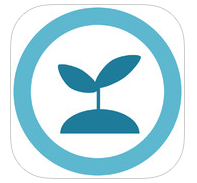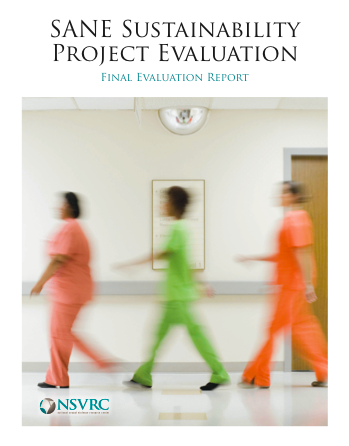The Coalition for Juvenile Justice is hosting a webinar November 19th at 3pm ET: Child Trafficking and Juvenile Justice. Click through for details about the session:
Tag: program management
I didn’t post this in real time, because I got it on the day it was actually happening; happily Futures Without Violence archived the event, and now we can all check it out (US readers, at least). On October 30th they held a webinar with new updates about how the Affordable Care Act can help patients experiencing domestic and interpersonal violence. Click through for details:
The National Domestic Violence Fatality Review Initiative is hosting a webinar, Expanding the Forensic Narrative: Engaging Surviving Family Members in the DV Fatality Review Process. The session will be held November 18th from 10-11:30 PST. Click through for a description of the event:
How fantastic was this year’s IAFN conference? I’ve been going to it for I don’t know how many years, and I truly don’t recall a better one. Kudos to the IAFN staff, Board and planning committee for making it such a great one. I loved meeting so many of you, and I was blown away by how many folks are regular readers, so thanks for supporting our nerdy little site.
By the time you read this, I will be in Italy for a court martial. Sunday was spent crossing the country, kissing my wife goodbye at Dulles and then hopping a flight to Venice via London. I’ll be here all week, so it’s possible posts will be light this week, too. I promise to get back to regular posts next week. Honest. In the meantime, here’s some of what’s caught my attention since last we spoke:

 I am so excited to announce that the {free} SANE Sustainability app for iPhone and iPad is now available! This is a joint project of the National Sexual Violence Resource Center and IAFN, and the culmination of almost a decade’s worth of work. I really hope people will find it a helpful tool for managing SANE programs, with a wide variety of information focusing on issues like recruitment and retention, leadership, program expansion and more. I have a blog post on the NSVRC sustainability site introducing the app and its various components, so I encourage you to check it out. Click through for details on how to download the app (and how to obtain {most} of the information if you’re not an iPhone or iPad user):
I am so excited to announce that the {free} SANE Sustainability app for iPhone and iPad is now available! This is a joint project of the National Sexual Violence Resource Center and IAFN, and the culmination of almost a decade’s worth of work. I really hope people will find it a helpful tool for managing SANE programs, with a wide variety of information focusing on issues like recruitment and retention, leadership, program expansion and more. I have a blog post on the NSVRC sustainability site introducing the app and its various components, so I encourage you to check it out. Click through for details on how to download the app (and how to obtain {most} of the information if you’re not an iPhone or iPad user):
Medscape has a new CME/CEU opportunity available that should be of interest to many of you: Guidelines Address Screening for Nonviral STIs in Teens. As with all Medscape offerings, the CEs are free, but (free) registration is required on the site to access any content.
“Chlamydia, gonorrhea, and syphilis screening guidelines from the US Preventive Services Task Force and the Centers for Disease Control and Prevention recommend screening those at risk based on epidemiologic and clinical outcomes data. This American Academy of Pediatrics (AAP) policy statement regarding these curable, nonviral STIs summarizes the evidence for nonviral STI screening in adolescents, discusses the value of screening, and offers recommendations for routine screening of adolescents for nonviral STIs.”
You can also check out the full-text policy statement from AAP here (PDF).
I’m heading home from CLE today after a long weekend with my daughter and parents, so I spent way more time playing than being online. All in all, a really welcome reprieve from what will be a fairly hectic couple of weeks–prepping for and attending the IAFN conference, and then immediately heading to Europe for a military trial. Still there was plenty of news to catch my eye, so here’s what I’ve been checking out since last we spoke:
A Few Stalking Resources
We are not so good at talking about stalking in the healthcare arena, even though we know that many of our patients have dealt with or are currently dealing with the issue, particularly as a component of intimate partner violence. So as I was perusing the Stalking Resource Center’s October newsletter I realized this would be an excellent topic for today’s FHO post. Lots of good stuff here:
Did I mention that I’m doing a webinar for the Tribal Forensic Healthcare project November 3rd? It’s going to be on the health consequences of IPV, and it’ll be held from 3-4:30pm ET. As with all offerings from this project, CEUs and CMEs are available. Click through for details about the webinar and our live 3-day IPV course for clinicians:
Good weekend, yes? Aside from some minor tech failure (hello, brand new router), it was pretty lovely on this end. So I’m slogging away this week, trying to just remember, bird by bird. Occasionally procrastinating with the interwebs, but working my way through the long to-do list. Want to see what I’ve been reading since last we spoke?
Time once again for Articles of Note, our monthly look at what’s new in the peer reviewed literature. What is it about some months that make them so much better than others? I don’t know, but I have to tell you, this is one of those. First off, there’s a lot to wade through. And second, there’s a lot of breadth to the research, meaning that this month’s list should be relevant to a wide variety of practices. As always, the review isn’t exhaustive, just what’s caught my eye in the September/October/November journals (and the online releases). Contact me for the word doc; click through for a printable PDF and the hyperlinks, all of which go to PubMed unless otherwise indicated.
On Setting Limits
I feel like I could give an entire talk on the subject of setting limits. It’s particularly relevant today, because it’s Rosh Hashanah, the Jewish New Year, and I am working. In fact, I don’t know when the last time was that I took the High Holidays off. When you work for yourself, the reality is that you could simply always be working. What’s more, I really love the work I do. But taking care of yourself is not optional. And for me that means setting limits.
Here’s a fascinating webinar that’s coming up (and it’s free, and many of these business webinars are distinctly not)–Mastering Difficult Conversations: Tips and Tools from a Former FBI Hostage Negotiation Trainer. I post this here because it’s exactly the kind of session from which program managers may benefit–click through for all of the details:
My friend Sally tweeted this resource out and I thought it was worth sharing here. It’s a brief piece called Walking the Walk: Modeling Trauma Informed Practice In the Training Environment (PDF). I’m still chewing on this a bit, but I think there are great ideas here. And the intent behind it is an important one:
One of the key components of building organizational capacity for trauma informed practice is professional development. Staff needs training to gain basic understanding about trauma, its prevalence and impact on individuals, families, communities and organizations; what it means to be trauma informed; and specific skills and techniques for providing services in a trauma informed manner. It is not enough, however, to just “inform” professionals about trauma in our efforts to establish a trauma informed workforce. It is essential that in the process of providing professional development and workforce training we imbed and model principles of trauma informed practice in the training environment.

In anticipation of an exciting new tool about to be unveiled from the SANE Sustainability project, NSVRC has published the final evaluation (PDF) from the initial iteration of the project. For those of you who don’t recall what this was, it was the onsite technical assistance for struggling programs that was provided several (okay, maybe more than that) years ago. It preceded the online course we taught a couple times on sustainability in the 2nd iteration of the project; all of that has lead us to the newest resource, which we’ll be unveiling in October.
Greetings from Montgomery, AL, from where I am currently trying to escape after a brief lecture at Maxwell AFB. If you’ve been playing along at home, you know that I have managed to hit all 4 time zones in the continental US over the past week, and I’m on day 8 of travel, which is making me cranky. Assuming the weather holds I’ll be home tonight and for the next couple weeks. Let’s not talk about October right now; I’m going to pretend it’s simply not happening. My failed attempt to get an earlier flight home means I am sitting at the airport with all kinds of time to catch up on the interwebs; here’s what’s caught my eye since last we spoke:
Since Last We Spoke 9-8-14
I woke up this morning at Joint Base Lewis-McChord in Washington, very far from home and decidedly still on east coast time. I’ll be here for a hot minute before I move on to Billings, MT where we are rolling out a brand new IPV curriculum (super excited about that), so this week is a long one. I will attempt regular posts, but forgive me if they’re a bit light this week. You just never know how a new course will go. This weekend consisted of a lot of prep, but there was still plenty of distraction–here’s what caught my eye since last we spoke:
Futures Without Violence and the American Academy of Pediatrics have a free, online learning module, Addressing the Bigger Picture in Pediatric Settings: Adverse Childhood Experiences. The session is available for CEU/CME credit. Click through for details:
I’m always harping on the importance of social media as a tool for the work we do, so I’m thrilled that Safe States and the CDC are collaborating on an upcoming webinar series that addresses just that. Why Social Media for Injury and Violence Prevention (IVP) kicks off the series September 17th from 1-2pm ET. Click through for details about the session and information about the entire series:
It’s been a while since I posted something in the sustainability vein, and this upcoming webinar from TESSA and CCASA was irresistible. It’s really the type of educational offering I love, because it’s forward-thinking; that perfect session for those of you who feel like you have your program up and running, and now want to take the next step. Telling Your Story: Marketing and Branding Your Agency will be held September 3 from 12-1:30 pm MT. Click through for details.
